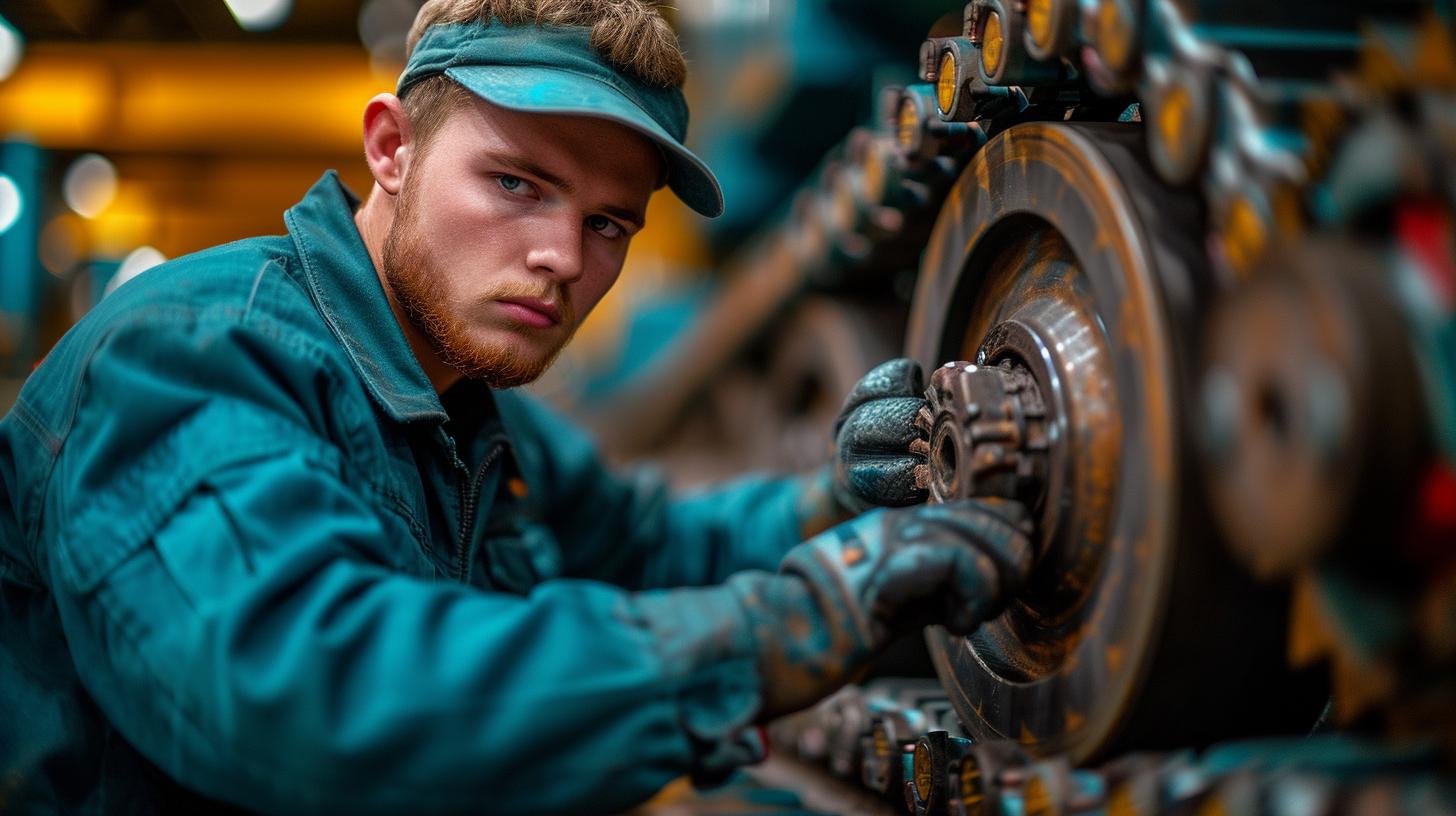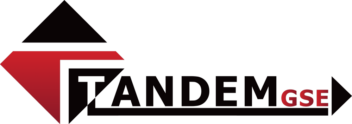Pushback tractor parts are integral elements in the machinery that significantly drives efficiency on airport tarmacs. As the literal driving forces behind commercial aviation operations, pushback tractors serve a role that is both practical and essential. They ensure the precision transfers of aircraft between hangers, terminals, and runways, tasks that require expertise and reliability given their significance in initiating flight operations.
A pushback tractor’s main function lies in its name: to push an aircraft away from the airport gate when it is too risky or impractical for the airplane to move under its own power. These vehicles enable safer management of aircraft movement in spaces where complex maneuvering is required. A subtle but significant player in aviation performance, they provide effective solutions for bustling airports dealing with high-volume traffic.
Although not as highly recognizable as airplanes themselves, without properly functioning pushback tractors complete with all their elements operationalizing efficiently, there would be substantial disruption to smooth airport functioning leading to potential delays and financial losses. By closely examining pushback tractors and understanding how their constituent parts work together towards efficient ground handling operations at airports worldwide, we can reveal the hidden mechanics behind seamless flight schedules that we often take for granted.
Understanding Pushback Tractor Parts
An in-Depth Look Into Pushback Tractor Components
Understanding each of the pushback tractor parts is crucial, as they function together to create a seamless machine that delivers flawless towing capability. Each component plays an integral role, and the absence or failure of even one can hinder operations on the tarmac.
The key components can be broadly categorized into: The engine which powers the entire mechanism; the hydraulic system that engages in lifting, pushing or pulling functions; and tires which determine mobility and stability during towing. On another note, there are auxiliary elements such as lighting equipment for visibility during night time operations but their contribution to efficiency is indirect.
How Pushback Tractor Parts Contribute to Overall Functionality
The engine, generally a diesel or electric one, supplies the required power for all activities. A powerful engine ensures fast yet safe movement of aircrafts without having any operational delayed minutes. The hydraulic system controls the tow bar or towbarless function depending on model type. This system generates force necessary to push or pull an airplane, reducing manual labor greatly.
Tires form an essential part too due to direct impact on traction and maneuverability. Obviously without them the tractor wouldn’t move an inch but their quality dictates how smoothly it would interact with tarmac surface ensuring hassle free activities especially when weather conditions turn harsh.
Auxiliary parts like lights and braking systems though seem insignificant in comparison still hold value as they ensure safety while operations take place in varied visibility conditions ensuring not just efficiency but uninterrupted service delivery.
The Interplay Between Pushback Tractor Parts
The relationship between various pushback tractor parts defines the performance of these heavy-duty vehicles. For example, an efficiently working engine powers all other mechanisms including hydraulics prompting it to generate substantial force for moving aircrafts seamlessly. However if tires do not offer enough grip or have worn out threads then even this powerful force turns useless because tractor can’t move or stops abruptly endangering the towed aircraft.
How Pushback Tractors Drive Efficiency on the Tarmac
Pushback tractors are vital to the daily operations on airport tarmacs worldwide, enabling quick and safe maneuvering of aircrafts in and out of their gate positions. The complex mechanics underpinning the functionality of these vehicles directly contribute to their ability to drive efficiency on the tarmac. Essentially, pushback tractor parts play a crucial role in ensuring that planes are correctly and swiftly positioned, helping to minimize delays in busy airports.

A deeper dive into how exactly this works is necessary. First off, the engine is responsible for generating power while an efficient hydraulic system continually supplies force required for pushing or pulling aircrafts weighing up to hundreds of tons. It’s important to note that achieving this feat involves minutely calibrated movements from various components all working together seamlessly:
- The engine, usually diesel-powered, provides the necessary torque.
- The hydraulic or electric transmission system transfers this torque into usable power.
- Tires built for heavy loads enable easy movement even with extensive weights attached.
- A pushback coupler or tow bar, specially designed depending on aircraft type details, connects the tractor and airplane securely facilitating effective push-and-pull operations.
The resulting operational synergy ensures a smooth ride every time an airplane moves from its gate position to starting point on taxiways for take-off or vice versa upon landing. In turn, better operating pushback tractors equate lessened chances of mechanical hiccups that can translate into significant delays for passengers waiting aboard flights.
However, acknowledging that moving such mammoth structures requires precision control cannot be overstated. An understanding of how each part contributes to overall tractor operation helps ground crew ensure optimal productivity levels. Every detail matters down from accurately functioning gauges alerting operators about integral systems’ health statuses – like overheating engines or low oil levels, to steering mechanisms offering superior control capabilities.
In truth, the core of efficiency in tarmac operations largely resides in minute details governed by complex systems incorporated into these robust machines. Each part performs a crucial function that, collectively, ensures the success of each operation. Henceforth, recognizing the vitality of pushback tractor parts in driving tarmac efficiency proves instrumental.
Key Pushback Tractor Components That Impact Efficiency
Crucial Parts and Their Role in Efficiency
A pushback tractor is essentially made up of numerous key components that work together to provide efficient operations. Understanding these pushback tractor parts and how they contribute to the machine’s performance can offer insights into their direct impact on tarmac efficiency.
Perhaps one of the most important component in a pushback tractor is its engine. Often characterized by superior horsepower, quality engines enable the tractors to maintain steady, controlled movement while pushing heavy aircrafts. Efficient fuel usage in these engines also contributes to overall cost-saving measures within airport operations, thereby directly affecting efficiency.
The wheels or tires of a pushback tractor also play a significant role in its overall performance. With proper maintenance, high-quality tires not only reduce chances of on-tarmac accidents but also ensure smooth movements during airplane positioning.
Then there’s the hydraulic system; this sophisticated technology allows for easy maneuverability of massive airplanes, thanks to the strong pressure it generates. It forms an integral part of the machinery, often requiring specialized maintenance routines due to its pivotal role in improving tarmac efficiency.
Maintenance and Upkeep for Improved Efficiency
Proper maintenance and regular upkeep of these crucial components greatly affects their functionality, ultimately impacting tarmac efficiency. Here are some general tips:
- Engines should be serviced regularly according to manufacturer guidelines.
- Tires need to be checked for wear and tear before each operation.
- The hydraulic systems should be examined by specially trained professionals – any leaks or pressure issues must be addressed promptly.
Following these steps can ensure that all essential pushback tractor parts run optimally while controlling costs.
Impact on Overall Tarmac Efficiency
A properly maintained pushback tractor equals smoother operations on the tarmac which significantly reduces delays associated with aircraft pushing. High-performing engines ensure satisfactory speed and power to push aircrafts of various sizes. Quality tires provide stability and control, contributing to safety on the tarmac.

Additionally, with an efficient hydraulic system, the maneuvering of large airplanes is made significantly simpler and faster, saving valuable time in a highly time-sensitive environment like an airport. Thus, these mandatories in a pushback tractor establish a direct connection between machinery maintenance and efficiency on the airport tarmac.
Maintenance and Upkeep of Pushback Tractor Parts
The Importance of Maintenance
The successful operation and optimized performance of pushback tractors are largely hinged on regular maintenance, which ideally focuses on pushback tractor parts. Understanding the vital role that each part plays in the overall functionality of these machines is critical for ensuring smooth operations on the tarmac. Just like any other machinery, the wear and tear from regular use can significantly reduce not only the lifespan but also the efficiency of these vehicles, especially if kept unchecked for prolonged periods.
Maintenance Procedures and Tips
Several procedures exist to keep pushback tractor parts functionally optimal. Regular examination allows for early detection of faults or potential points of failure in these components.
The engine oil should be changed frequently to reduce friction among moving parts, while loose bolts ought to be tightened back into place to avoid accidents during operation. The hydraulic system, which plays a crucial role in controlling the movement and force exertion capacities of these tractors, should be kept free of leaks at all times while all electronic control systems should undergo occasional functional tests to ensure they’re in their best working condition.
Additionally, worn out tires need replacing without delay to maintain grip power during operation and prevent slippage-especially when managing heavy aircraft during wet weather conditions. Air filters should be cleaned or replaced as needed since clogged filters restrict airflow leading to higher fuel consumption and decreased engine efficiency.
Improving Efficiency
Maintaining pushback tractor parts isn’t just a necessity-it’s an investment towards increasing operational efficiency on the airport tarmac. Well-maintained engines deliver optimal output with minimal fuel consumption, thereby reducing operational costs over time. A functioning hydraulic system ensures precise control over aircraft movement, thus minimizing potential incidents from untimely or inadequate reactions.
In essence, streamlined operations translate to easier scheduling and more accurate timing-both invaluable benefits in an industry where timely departures and arrivals have significant implications on overall efficiency. Moreover, by preventing major breakdowns through regular internal maintenance checks, overhead repair costs can be drastically reduced, allowing more resources to be allocated in areas that improve services and customer satisfaction at the airport.
The Future of Pushback Tractors
As the aviation industry progresses, there are evolving trends and technologies shaping the future of pushback tractors. New designs and technology bring about modified pushback tractor parts to enhance their performance, thus driving tarmac efficiency.
Incorporation of hybrid and electric power systems in current pushback tractors is one significant development focused on energy efficiency and environmental preservation. By cutting down on fuel consumption, these green technologies not only decrease operational costs but also reduce the industry’s carbon footprint.
Some manufactures are beginning to introduce autonomous or remote-controlled tractors that could usher in an era of increased efficiency on the ground. These tractors would be able to perform tasks with high precision while reducing human error.
Adaption of enhanced smart control systems is another trend that contributes to increasing coordination and reducing tarmac congestion. This intelligence entails more than just simple automation; it requires incorporating advanced software that combs through historical data for better decision-making. When these innovative systems are combined with top-tier pushback tractor parts, operators can look forward to improvements in safety, productivity, and cost-effectiveness.

The future of pushback tractors indeed holds exciting possibilities with advancements such as these promising enhanced levels of efficiency on the tarmac.
| Emerging Trends | Impact |
|---|---|
| Hybrid and electric power systems | Cut down on fuel consumption thus reducing operational costs and carbon footprint |
| Autonomous or remote-controlled tractors | Increase precision in task execution while minimizing human error |
| Smart control systems | Enhance coordination, reduce congestion, improve safety & productivity while optimizing costs) |
Conclusion
As we’ve delved into the intricate mechanics of pushback tractors throughout this article, the unquestionable importance of pushback tractor parts in achieving high levels of tarmac efficiency has been underpinned. These vehicles play a primary role in ensuring smooth and timely ground operations at airports worldwide.
Yet, it is their individual components – from engine to tires to hydraulic systems – that enable them to carry out these jobs effectively. As such, the regular maintenance and upkeep of these parts is paramount in maximizing overall productivity on the airport tarmac.
Indeed, as advancements continue to be made in the field of aviation technology, one can anticipate that future developments will further enhance the efficiency and effectiveness of pushback tractors. Upgrades to existing pushback tractor parts or even entirely new components could supersede what’s currently being used today. As these progressions unfold they are likely to provide an array of benefits for airlines and airports alike – such as expedited ground handling times and a subsequent reduction in flight delays.
In conclusion, understanding and maintaining the intricacies of pushback tractor parts is vital for anyone seeking efficient airport operations. From ground crew staff who handle these vehicles daily to engineers responsible for their design, full comprehension of how these fundamental building blocks contribute to overall functionality can significantly elevate tarmac efficiency.
In our fast-paced world where time waits for none, ensuring strong performance from your fleet of pushback tractors through diligent attention given towards individual components may well become your advantage over competitors in this bustling sector. Always remember: quality always pays off.
Frequently Asked Questions
What Is a Pushback Tractor Called?
A pushback tractor is often referred to as an aircraft tug. These vehicles are specifically designed to move aircraft on the ground at airports, typically used to push them back from their parking stand.
What Is a Tractor Ripper?
A tractor ripper is a piece of agricultural machinery used in farming. Its primary function is to break up hardpan and compacted soils, which improves drainage and plant root penetration.
What Is the Airport Tractor Called?
The airport tractor is usually called a tow tractor or an aircraft tug. These are specialized vehicles that safely maneuver aircraft when they aren’t under their own power, such as during push back from the gate or for positioning in a hangar.
What Type of Equipment Is a Pushback?
Pushback refers to equipment that aids in moving heavier objects—in this case, aircrafts—on the ground without requiring them to use their engines for propulsion. More commonly known as tow tractors or tugs, these machines execute what is commonly known as a ‘pushback’ at airports.
What Is the Difference Between Tractor and Pusher Aircraft?
The main difference between a tractor and pusher configuration in aircraft concerns the placement of the propeller relative to the engine and cockpit. In a tractor configuration, the propeller is located at the front of the engine (pulling it through air), while in a pusher configuration, it’s placed behind (pushing it through air).
Each arrangement has its own advantages in terms of stability, noise levels, maintenance accessibility etc.
What Is an Articulated Tractor?
An articulated tractor, often referred to as an articulating tractor or an articulated hauler, has a jointed mainframe enabling it be steered around tight corners and over difficult terrain. They’re widely utilized due to their capability for high amounts of torque and load-carrying capacity.
